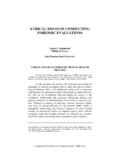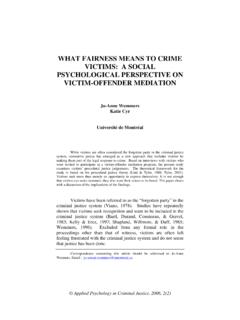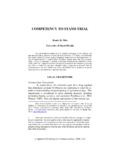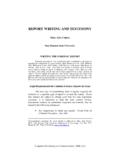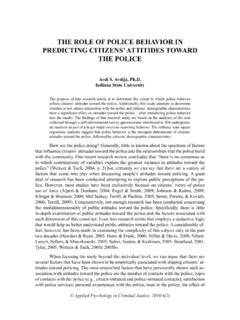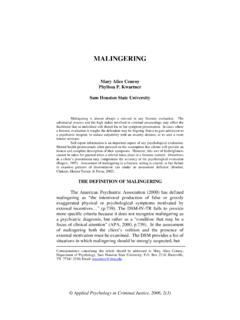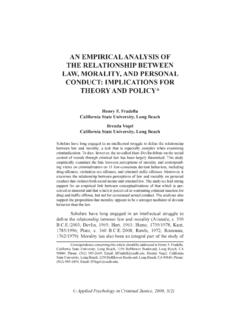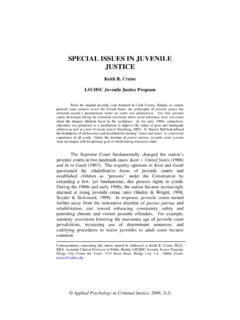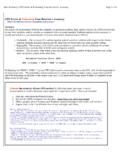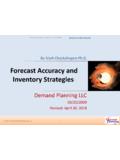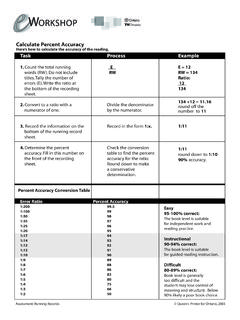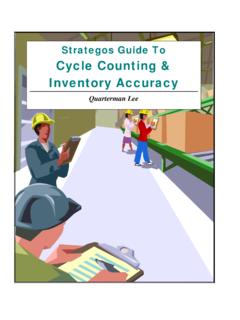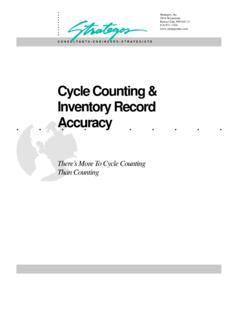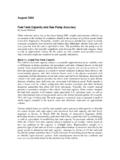Transcription of THE RELATIONSHIP BETWEEN CONFIDENCE AND …
1 Applied Psychology in Criminal Justice, 2007, 3(1) THE RELATIONSHIP BETWEEN CONFIDENCE AND ACCURANCY: CURRENT THOUGHTS OF THE LIT-ERATURE AND A NEW AREA OF RE-SEARCH Kevin Krug Southeastern Oklahoma State University Many believe the levels of CONFIDENCE eyewitness express when identifying crimi-nal suspects in lineups or testifying in trials make good predictors of their memory accu-racy. Traditionally known as the CONFIDENCE - accuracy (CA) RELATIONSHIP , the assumption is that as one s CONFIDENCE increases so does thier level of accuracy . The research litera-ture has addressed the CA RELATIONSHIP along three main lines: examining rates of confi-dence and accuracy in memory for general knowledge (factual information), determining if the CA RELATIONSHIP can be divided into subsections in which performance levels are consistent, and developing measures to raise the value of the CA RELATIONSHIP .
2 The lit-erature outlining the role of the CA RELATIONSHIP in criminal suspect identification is in-deed extensive, but there is little mention of a new field of interest in which the CA rela-tionship is applied to eyewitness memory for product brand names. While there are a number of factors present during every trial which may ultimately decide the fate of a defendant, some factors are given more credence than others, particularly by the jury de-ciding the case. In some cases, the only available evidence to a jury may be the testimony of a witness who has claimed to have seen or been aware of the offenses committed by the defendant.
3 Frequently, the jury uses a witness s level of subjective confi- Correspondence concerning this article should be addressed to Dr. Kevin Krug, Department of Behavioral Sciences, Southeastern Oklahoma State University, 1405 N. Fourth Ave., PMB 4116, Durant, OK 74701-0609, E-mail: 8 CONFIDENCE & accuracy Applied Psychology in Criminal Justice, 2007, 3(1) dence as evidence of his or her knowledge, a phenomenon known as meta-memory. Meta-memory judgments are made when jurors use an eyewitness s outward displays of CONFIDENCE ( , witness uses terminology such as absolutely sure or more than posi-tive ) when deciding the accuracy and relevance of that person s testimony.
4 More specifically, metamemory is the monitoring, predicting, and controlling of one s memory. There are several ways to quantify metamemory, including judgments of learning, feelings of knowing, or CONFIDENCE in the accuracies of memory (Benjamin, Bjork, & Schwartz, 1998; Nelson, Narens, & Dunlosky, 2004). The accuracy of these metamemory judgments can be detected by examining the RELATIONSHIP BETWEEN a person s predicted and actual performance; this is known as the confi-dence- accuracy (CA) RELATIONSHIP . In some tests, these predic-tions are generally accurate, but in others the correlations are small or even nonexistent (Bothwell, Deffenbacher, & Brigham, 1987).
5 A number of court officials, including judges, believe a witness s level of subjective CONFIDENCE is a good indication of his or her testimonial accuracy (Wise & Safer, 2004). A survey conducted by Brigham and Wolfskeil (1983) found that 73% of law enforcement officers, 75% of prosecutors, and 40% of de-fense attorneys consider witness CONFIDENCE and testimonial accu-racy positively correlated. Juries also consider CONFIDENCE to be a good indicator of a witness testimonial accuracy (Brigham, 1990; Brigham & Bothwell, 1983; Penrod & Cutler, 1995). In fact, one important criteria influencing a juror s opinion regarding eyewit-ness testimony credibility is the level of CONFIDENCE shown by the witness during questioning (Bradfield & Wells, 2000; Cutler, Penrod, & Dexter, 1990; Cutler, Penrod, & Stuve, 1988; Leippe, Manion, & Romanczyk, 1992; Sporer, Penrod, Read, & Cutler, 1995).
6 Juries are more likely to believe witnesses who appear very confident and excuse inaccuracies in their testimony com-pared to witnesses who appear less confident but give accurate testimony (Brewer & Burke, 2002; Lindsay, Wells, & Rumpel, 1981; Wells, Ferguson, & Lindsay, 1981). These findings are not limited solely to the United States. The citizens in countries such KRUG 9 Applied Psychology in Criminal Justice, 2007, 3(1) as Australia, Canada, and England also believe the level of wit-ness CONFIDENCE should be weighted heavily when determining testimonial accuracy (McConkey & Roche, 1989; Noon & Hollin, 1987; Yarmey & Jones, 1983).
7 Even the United States Supreme Court considers an eyewit-ness s level of CONFIDENCE a useful predictor of his or her testimo-nial accuracy . As a result of Neil vs. Biggers (1972), the Su-preme Court acknowledged five criteria that should be followed when evaluating the reliability of perpetrator identification made by a witness: the amount of attention paid to the perpetrator by the witness, the accuracy of the witness s description of the per-petrator, the witness s view of the perpetrator during the crime, how certain the witness is of his or her identification, and the amount of elapsed time BETWEEN the event and perpetrator identi-fication.
8 Wells and Murray (1983) have pointed out that with the exception of the last criterion, all other points are dependent on the witness memory and cannot be completely verified. Despite the belief of those in the court system and public re-garding the CA RELATIONSHIP , the majority of the research asserts that CONFIDENCE is a poor indicator of memory accuracy (Berger & Herringer, 1991; Hollin, 1981; Penrod & Cutler, 1995; Smith, Kassin, & Ellsworth, 1989; Sporer et al., 1995; Tomes & Katz, 1997). After reviewing 31 studies examining the CA RELATIONSHIP for eyewitness memory, Wells and Murray (1984) found the aver-age correlation to be only r =.
9 07. A more well-known study by Bothwell et al. (1987) found an average CA RELATIONSHIP of just r = .25 among a total of 35 research studies. Similar results were described by Penrod, Loftus, and Winkler (1982) who, after re-viewing 16 eyewitness memory studies, found an average CA re-lationship of r = .25. Furthermore, in a recent survey of research-ers who give expert testimony regarding eyewitness memory, 73% said they would testify that a witness s level of subjective CONFIDENCE is not a good indicator of his or her true memory accu-racy (Kassin, Tubb, Hosch, & Memon, 2001). It remains unclear, however, if this type of expert testimony decreases (Cutler, Dex-ter, & Penrod, 1989; Cutler, Penrod, & Dexter, 1989) or increases 10 CONFIDENCE & accuracy Applied Psychology in Criminal Justice, 2007, 3(1) (Fox & Walters, 1986) the susceptibility of the jury to rely on lev-els of CONFIDENCE when evaluating testimony.
10 Not all studies examining the CA RELATIONSHIP for eyewitness memory have found that CONFIDENCE is a poor indicator of accu-racy. Several studies report high CA relationships in the neighborhood of r = .42 to .63 (Brewer, Keast, & Rishworth, 2002; Lindsay, Nilsen, & Read, 2000; Lindsay, Read, & Sharma, 1998; Stephenson, Brandstatter, & Wagner, 1983). These re-searchers go on to explain that CONFIDENCE can be a useful predic-tor of accuracy once the correct statistical analyses and situational variables are taken into account. The value of the CA RELATIONSHIP does appear to fluctuate de-pending on the mathematical methods used to assess it, domain tested ( , memory for general knowledge or eyewitness mem-ory), underlying components, and manipulations engineered to improve accuracy .
